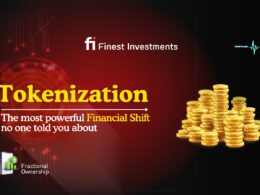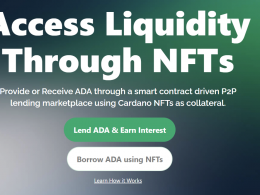This post is the third and final part of a long article covering all the positive aspects of Cardano. It was adapted from a thread originally posted by @Flantoshi on Twitter
Welcome back to the final of three parts covering all the reasons why Cardano is an interesting investment. If you’re only now joining us, here’s the first post, and the second post, though the articles can be read in any order.
Before I continue though we must do the usual rigamarole where I try to cover my ass as best as possible in order not to get sued:
Look, I’m a dude who pretends to be a flan for a living. If you’re looking for one of a kind insights, or investment advice, you’re not gonna find them with me. I mainly want to explore Cardano in all its forms. The title is clickbait, nobody should or should not own any investment, as everyone’s needs and life circumstances are different. Also worth noting that a few weeks ago I wrote “Why you SHOULDN’T invest in Cardano.” All this to say, take whatever I say with a grain of salt. I’m just one voice among many.
With that out of the way, we can continue with the introduction.
As luck would have it, the next sections of the analysis are particularly relevant now that we are sitting pretty at under $1 per ADA. We’ve already analysed ADA from a system perspective, its business model, and its philosophy to tackle problems.
Today we will be putting all that together, and seeing what happens when the rubber meets the road. How does Cardano fare in the real world where things rarely go to plan and you have to navigate powerful entities with competing interests?
Environmental Friendliness
I’ll tell you when I first grew aware of Cardano’s existence: It was May 2021, I’d just been working with an Ethereum-based project for a few months and gotten used to crypto lingo and whatnot. I had already put some money into Ethereum but was still getting my bearings.
Then, the infamous regular strawman piñata of my articles, Elon Musk brought the crypto market crashing down, because apparently he’d just been made aware that Bitcoin used an ungodly amount of energy. As such, Tesla would no longer be accepting Bitcoin as payment, until it could be made more environmentally friendly.
In other words, he’d either committed several billion dollars on a concept he barely understood, or he was lying about his ignorance and deliberately manipulating the market to further enrich himself at the expense of everyone – I don’t know which is worse!
Be that as it may, the Cardano Foundation took this opportunity to begin extolling the environmental friendliness of Cardano, relative to Bitcoin. It was a brilliant marketing masterstroke, as it got Cardano on trending and that’s where I first saw it.
This wasn’t what ultimately got me to buy ADA in the first place, we’ll get to that in the upcoming sections. But the environmental friendliness of Cardano is not something to be taken lightly.
Firstly, it’s a bulwark that can protect us from hostile regulation. Regulators are increasingly aware that the public likes crypto, but they also understand that if crypto were to succeed in its ultimate ambitions, they’re out of a job.
Authorities thus have to get a bit creative in how they attack crypto. They don’t want to be seen as an anti-innovation Luddite, nor as anti-free markets and entrepreneurship, so what can they do? If you can’t ban a duck by name, regulate anything that quacks like a duck, walks like a duck and acts like a duck, but isn’t necessarily a duck.
Yes, you may accidentally ban geese with such a blunt technique, but who cares?
As such, one of the likeliest attack vectors is the environmental aspect. If crypto protocols get singled out as being particularly pollutant, then they’re likely to be hit by harsh regulation, ostensibly to stop it from polluting, but more so to try to kill it.
Cardano, with its Proof of Stake operating method, and considerable efficiency, can tap dance around such regulation. Yes, it might be a duck, it might quack like a duck, but it doesn’t necessarily act like a duck.
At least from the environmental cudgel standpoint, Cardano will remain bruise-free. For that angle to work against them, the regulations would have to be so broad as to be meaningless.
It’s worth mentioning that passing the environmental friendliness hurdle is also quite good for business. If you’ve participated in the traditional financial world in the last few decades, you have likely seen the ESG label.
ESG stands for Environmental, Social and Corporate Governance. In theory, any investment that is moral and positive for society should have an ESG label. In practice, it’s a means by which the powers that be can funnel funds to areas that they have a vested interest in.
By way of example, weapons shipments destined for Ukraine were attempted to be labelled as ESG-friendly as that way they would qualify for EU investments and money from funds that only invest in ESG-labelled business ventures. It’s a huge racket, estimated to be worth $53 trillion.
In my time as a financial journalist, I saw that the label was up for sale, and a whole ecosystem of certification and consulting had popped up worth billions of dollars. Considerable abuses were happening, one in particular that comes to mind was a huge office space that got labelled as environmentally friendly and qualified for special loans because they had some trees in the lobby.
This is not to say I’m against the environment or I’m pro- any bad thing you care to mention. I’m just a bit more cynical about giving power to authorities. And the ESG sticker has just been a means to attract funds and occasionally be able to pass projects that those in power want, but with considerably less oversight than would otherwise be present.
“Give me a few billion dollars, or bad things win. You don’t want the planet to die, now do you?”
Fortunately, either by deliberate design or by accident, Cardano has positioned itself in such a way that it squarely falls within the scope of ESG. Not only is it environmentally friendly, but it also has a positive social mission, and promotes direct stakeholder governance. It’s just a matter of formalizing it and paying the right blood money to the proper organization which can make it official.
What this means, is that all the funds, investment companies and government entities that can only deal with ESG-compliant organizations, will be able to invest in and do business with Cardano. This alone grants it access to trillions of dollars that it would not have otherwise had seen.
A good portion of the wider crypto market will simply NEVER have access to these investments and potential partnerships.
Focusing on the Real World
If there was one thing that drew me to Cardano it’s when I saw the ecosystem map that showed all the partnerships with the different governments, corporations and universities.
That convinced me that it wasn’t all talk, and Cardano truly wanted to create meaningful alternatives in the financial system.
Despite what cryptocurrency was ostensibly designed to be – a peer-to-peer trustless cash payment solution that functioned parallel to the interests of the elites – it has devolved into being a glorified casino. Whether it’s the Initial Coin Offerings mania of 2017 or the 2021 NFT boom, crypto just seems to cater to degens in their mom’s basement.
It’s a zero-sum circular economy that mainly attracts the bored and the desperate to gamble their funds away. No genuine value is being created, no lives are being improved by using the services that DeFi provides, and the target demographic is very finite.
After all, most people don’t have the funds, time, or desire to gamble their savings away.
If crypto is to grow as an industry and reach mainstream adoption, then it must stop catering to the degens and focus on real-world utility. It’s only by meaningfully impacting the lives of the average Joe, that we will be able to create mass adoption.
The problem is that crypto is a solution in search of a problem. In the first world, for better or for worse, people already have access to better financial systems than crypto can offer in these early stages. As a further gut punch, even if you ignore the fact there are already better alternatives out there, it would be exceedingly difficult to live on-chain in the Western World.
The Developing World and Real Finance
The aforementioned lack of a genuine use case in the first world is why Cardano has focused on underdeveloped areas like Africa. Lord knows I have my gripes about the immediate suitability of the continent, but I do think it’s the right approach from a broader POV.
The main people who are interested in an alternate financial system are those who have an underdeveloped system or even none at all. It’s similar to how China leapfrogged the West in terms of using apps for payments instead of cards, as they chose the more advanced tech when they had a clean slate.
As such, even if Cardano might not presently have the DeFi facilities to fully compete against centuries of banking infrastructure entrenchment, they can plant flags elsewhere where the competition isn’t quite so stiff. Then, in time, when they’ve gained experience and clients, they can compete against the big boys and feasibly win.
It’s a mutually beneficial environment as the billions of people that are presently unbanked/underbanked have had a raw deal for decades. A good example thereof is that of microloans.
To oversimplify a complex issue, a microloan is a small credit extended to impoverished borrowers who typically lack collateral, steady employment, or verifiable credit history. They’re usually issued by specialised companies, as traditional banks hardly see the point in bothering with them given the tiny profit margin and high rates of default.
It’s not that the returns on these microloans are bad — quite the contrary — as rates can go between 37% and even above 70% in some markets. Nevertheless, according to the World Bank, these loans typically amount to $132 per borrower, with a median of $26 per loan.
Charles Hoskinson has mentioned that he would view Cardano as a success if the issue of microloans were disrupted. In other words, when the Western World can leverage its wealth to provide affordable credits to African entrepreneurs, and these loans provide a stable ROI, Cardano will have succeeded.
It might seem like a weird benchmark to have, but when you think about it, it makes perfect sense. To successfully lend in DeFi, you have to have a means of pooling collateral as a crowd, then you need a means of identifying people’s creditworthiness, thereby being able to determine a default rate. Finally, by aggregating hundreds, or thousands of these contracts into a single asset, if you did your homework correctly, you should have a predictable and stable ROI.
Then, over time, as this asset class proves itself to be reliable, the interest rates would decline, and the risk would fall. So there would eventually be parity in access to financing between wealthy economies and the developing world,
Not only that but there would be billions of new users who would have no use for a bank.
Few crypto projects have such a clear vision of what victory looks like. And because they don’t know where they’re going, they don’t know how to get there. So it results in an incredible amount of wasted energy floundering from one direction to the next, chasing shiny baubles but never reaching anything.
Cardano presents a positive vision of what the future might be, is it any wonder that people, governments and even corporations are happy to take part in the project?
Partnerships
I’m a good few thousand words into this article, and I’m only now mentioning the Cardano partnerships with Governments and Corporations, what gives? This should be the leading punch! (At least you would think that.)
Unfortunately, if I’m being completely honest, this is still an underdeveloped area. There are a lot of Memorandums of Understanding, a lot of vague press releases, but little you can immediately point to that says “Cardano is FINALLY doing business with the big boys!”
We’ll get there. These things take time, both to sign and to develop, and Cardano has only fully been in operation for five years. So I’m quite willing to cut them some slack in this department, even if it’s what initially drew me to them.
In either case, if we are looking for mainstream, rapid adoption, this is how to do it. Rather than Cardano desperately scrambling to gather an audience, why not work directly with the entities that already control the behaviour of billions of people?
Cardano’s data management solutions are quite appealing to large scale organizations. This might seem like a silly proposition, after all, surely, these entities already have options of their own or have billion-dollar contracts with established players.
But let’s frame it in a slightly different light. About a year ago, there was a fire in the French OVHCloud data centre which destroyed entire sections of the server farm. Dozens of companies lost important documentation and projects, and some might not be able to function without this data.
As more of our lives are lived online, and as we delegate more of our storage needs to the cloud, we’re coming to learn that this is not a fool-proof plan. If the cloud computing company goes offline by accident, it’s attacked, or it simply goes out of business, important data can be lost.
In addition to this, if you leave important data on those servers, there’s no firm guarantee that the owners of the cloud computing company, or the authorities might not come snooping about. This type of enormous counter-party risk is why countries like Russia run their government systems on their own Linux distro.
So Cardano can definitely over something quite unique for data management solutions: decentralized computation, immutability, 100% uptime, and if one’s encryption is up to scratch, a guarantee of privacy (yes, the encrypted data would be on-chain, but nobody would be able to make heads or tails of it without the right tools).
This is why it’s such an interesting option for less developed nations. They can basically get access to top-tier infrastructure management tools while having to do very little in terms of upkeep to keep them operational.
The Partnership Domino
In the fight of the US Empire against the Soviets, the Americans developed something they dubbed “Domino Theory.” It’s basically a fancy way of saying that if one country in a region came under the influence of communism then the surrounding countries would likely follow in a domino effect if the spread wasn’t quickly contained.
I think the principle is sound enough for it to apply to any deep-seated cultural movements that affect governance. For instance, the French Revolution, and the subsequent Napoleonic Wars, left an indelible mark on the European legal system. Suddenly, after Napoleon was defeated, and the leaders met in the Congress of Vienna, it became clear that they couldn’t walk back some of the policies that had been established under French rule. The era of feudalism, absolute monarchies and the like, while it didn’t die then and there, was certainly dealt a crippling blow from which it would never recover.
Cardano is a revolution in governance at every social level, make no mistake. So we ought to treat it through that historical lens.
Once Cardano begins operating in a certain country successfully, and bureaucracy is optimized, alongside living standards, others will follow. It’s also worth mentioning that Cardano is primarily a software solution, so there’s nothing stopping you from doing a good ol’ copy paste and slightly changing the names around.
In other words, once it is established and operational in one country, it can very easily spread to others like it. This will be the Cardano Partnership Domino effect, and this is how we will be able to onboard billions.
Then, when we have a huge audience of people using the protocol in some capacity, it will be child’s play to go to a major corporation and tell them “Look, we have access to millions of users with little to no brand preferences, would you be interested in partnering with us to build on our blockchain?”
This is how we win – with small victories here and there, and then we win the whole thing!
Battle-Tested
If what doesn’t kill you makes you stronger, then Cardano is going to be the most powerful being in existence itself!
I joke, but only half so.
Cardano has survived many threats that could’ve easily toppled lesser projects.
Ready for Regulation
First, there was the regulation issue. Whether we care or not to admit it as an industry, we operate under a legal grey area. The wild west is slowly being tamed, but for the most part, we’re having to create our path.
However, as the road hasn’t been marked before us when the government wishes to extract its pound of flesh, it can do so with ease. All projects that sold tokens to US people in their initial offering are subject to what is called “The Howey Test”, which determines what qualifies as an investment contract.
Unfortunately, the vast majority of crypto projects would be classed as securities, and are thus technically illegal products.
Worth noting that the Howey Test was introduced in 1946 by the US Supreme Court, to provide a uniform analysis to identify securities. In other words, almost a century-old ruling that was designed for an analogue world is being crowbarred into the courts, so that regulators have some tool they can wield against blockchain technology.
Be that as it may, you can sidestep that type of nonsense if you’re smart about it. Why do you think they did their Initial Coin Offering in Japan and why is the Cardano Foundation based in Switzerland?
It wasn’t that Charles just wanted to find nice excuses to travel around the world as a business expense. But by structuring the project like this, while not bullet-proof, you sidestep many of the issues now plaguing cryptocurrency projects.
Japan is crypto-friendly and offered the best long term benefits from a regulatory overview so it made sense to launch there, while Switzerland has a robust legal infrastructure for non-profit organizations and has fairly straightforward laws regarding blockchain technology.
These early, seemingly eccentric, decisions by Cardano early on are paying dividends. The project doesn’t need to immediately concern itself over certain US-centric issues, as it was deliberately designed with a global focus from the beginning. It based itself in jurisdictions that would be a benefit to the endeavour, rather than a hindrance.
Crypto at large should remember that the world is much, much bigger than just the USA.
Survived the Crypto-Winter
2017-2018 was a wild time in crypto. Every new blockchain project was getting handed money hand over fist and excitement was quite high. This is the environment under which Cardano was first released to the public, and investment sentiment was very positive!
Within a handful of months, ADA went from trading at $0.02 to $1.11. But then, the investor confidence in the whole industry vanished overnight. Billions of dollars in market cap were wiped out, and even “blue chip” investments like Bitcoin went down 80% from their all-time highs.
It took three years of waiting and biding their time for valuations to reach anything like they were in the bullish crypto-summer. This was known as “the crypto-winter” and it killed a good portion of projects. The argument can be made that of those lucky enough to have survived, there are some that haven’t managed to recover, and they’ve barely been limping along ever since.
However, Cardano took this opportunity to rethink its process. It was determined that for Cardano to succeed, it needed to rethink its approach. And they did the unthinkable – they scrapped everything that they had, as it became obvious that the protocol wasn’t up to the required standards.
This reconstruction of Cardano on a protocol level was the famed “Byron reboot,” which we alluded to in earlier sections. It bears saying though that this is not a decision you take lightly.
But it is a decision that requires tremendous courage. It’s akin to deciding to amputate your limb in order to make it out alive in a survival situation. You don’t know whether the blood loss will kill you, but you do know that the massive boulder weighing your limb down spells certain doom.
Surviving, and ultimately thriving in the icy depths of the crypto-winter is quite a feat! Even Kraken, a centralized exchange, recently took an uncharacteristically positive tone and dubbed Cardano “the ICO-Warrior.”
Perhaps it’s a touch overly dramatic, but it does go to show that Cardano has gotten its battle scars and come out on top. We may not know exactly what is in store for it in future, but we can confidently say that we will approach it with a stoic, creative and resilient mindset.
Conclusion
Oh boy! This piece ended up being around 9000 words in total. Just to put it into context, that’s around 15% of a non-fiction book!
If you’ve made it here by actually reading the whole thing, and not just randomly scrolling to it, I’d like to offer my sincerest thanks. The article might have been overly indulgent but I did genuinely want to create the most comprehensive investment thesis on Cardano to date.
We’ve looked at it from all angles that we can possibly look at: from the system architecture level, the environment it’s developing under, its community, its readiness to overcome challenges, and even applied a historical perspective on it.
In short, Cardano shows considerable potential from any angle you can look at it. While I might not have confidently endorsed it at other points in time, such as the dark period where it had to rebuild itself from scratch, it has come out the other end, and is all the stronger for it.
I’ll end this “article” (at this point it’s a goddamn manifesto), in much the same way I ended my “Why you SHOULDN’T invest in Cardano” article by stating the obvious. There are precious few certain things in life: death, taxes, and trolls on Twitter, that’s about it.
However, due to all the aforementioned reasons, I think Cardano has a very good investment proposal. While I don’t know what the upper ceiling is, I can confidently say that if its ambitions materialize to any meaningful degree, the price will be much higher than what it is now.
So Cardano presents you with a bet:
- Heads, you lose every cent that you put in, as blockchain technology turned out to be a cute but ultimately useless application of an interesting idea; or Cardano failed to compete against the mounting competition.
- Tails, Cardano succeeds in some or all of its ambitions and becomes a major player in finance, which represents a viable alternative to the status quo, and its token price rises to reflect this new fact.
Ultimately, I view Cardano as a heck of an asymmetric bet. Excluding the clickbaitiness of the title, I would caution anyone from betting the farm on Cardano. Everyone has different priorities and risk tolerances in life.
However, for me personally, Cardano is one of the few choices in my life where the downside of jumping into it is fairly low, while the potential is enormous.
TL:DR Cardano is pretty cool!
If you’re in the crypto or in the traditional finance industry looking for someone to ghostwrite content for you or consult regarding your content strategy, please do not hesitate to message me. I’m a full-time content producer.
Join the community over at @flantoshi on Twitter.
And if you would like to support this project and help me pay rent, I’ll pass on the tip hat and you can send ADA to:
- ADA wallet address: addr1qxfgs44d763uuw4hy6qatx383v9mmrrm6qazay6eren9sp5r2usruecwv33lp2t2nqp4ss6hrc9ac8yd2klxnsfnxz2qw3su4s
- Adahandle — $flantoshi
Thank you for your support!










